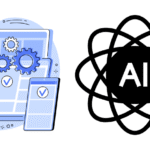 Regulatory Compliance for Security in Cross-Platform Apps prioritizes data privacy and security, meeting legal requirements and industry standards, thus elevating user confidence and corporate reputation in the tech ecosystem.
Regulatory Compliance for Security in Cross-Platform Apps prioritizes data privacy and security, meeting legal requirements and industry standards, thus elevating user confidence and corporate reputation in the tech ecosystem.
Developing secure cross-platform apps presents unique challenges. App developers must navigate complex protocols and safeguard app data in accordance with regulatory compliance requirements. Failure to comply with regulatory standards can result in costly security breaches, legal damages, and reputational harm.
That’s why regulatory compliance is critical to ensuring the security of cross-platform apps. Compliance with data protection and privacy regulations is vital to protecting user data, maintaining user trust, and avoiding legal and financial risks.
Key Takeaways:
- Regulatory compliance is essential to ensuring the security of cross-platform apps.
- Data protection and privacy regulations must be complied with to protect user data.
- Non-compliance can result in costly security breaches, legal damages, and reputational harm.
Why Regulatory Compliance is Important
Regulatory compliance is essential for ensuring the security of cross-platform apps. With the rapid growth in app development and usage, there has been a corresponding increase in the number and complexity of regulations and guidelines. Compliance with these regulations, such as data protection and privacy regulations, is crucial to safeguarding app data and user privacy.
Why is Regulatory Compliance Important for App Security?
Regulatory compliance serves as a framework to ensure app developers adhere to best practices for app security. By complying with regulations, such as the General Data Protection Regulation (GDPR) and the Health Insurance Portability and Accountability Act (HIPAA), developers can build trust with users and ensure their app meets legal standards.
App developers face significant consequences for non-compliance with regulations, including financial penalties and reputational damage. Compliance not only protects users but also reduces the risk of data breaches or other security incidents.
The Impact of Privacy Regulations on App Development
Privacy regulations, such as GDPR and the California Consumer Privacy Act (CCPA), have a significant impact on app development. These regulations require app developers to provide users with clear and transparent information about how their data will be used and processed. They also require the implementation of appropriate security measures to protect user data.
Developers must be aware of these regulations and ensure that their app is compliant with the applicable privacy regulations. Failure to comply with these regulations can result in significant financial penalties and reputational damage.
Data Protection
Data protection is a critical component of regulatory compliance for app security. It involves implementing appropriate security measures to protect app data from unauthorized access or disclosure.
Developers must ensure that user data is encrypted both in transit and at rest. They must also implement appropriate access controls to prevent unauthorized access to app data. These security measures must be regularly reviewed and updated to ensure that they remain effective against emerging threats.
Understanding regulatory compliance is essential for app developers to ensure the security of their cross-platform apps. Compliance with data protection and privacy regulations is crucial to safeguarding app data and user privacy.
By implementing appropriate security measures and staying up-to-date with evolving regulations, developers can ensure that their app meets legal standards and protects users from security threats.
Key Security Features in Cross-Platform Apps

When it comes to app security, there are several essential features that developers must implement to ensure compliance with regulatory requirements. These features protect sensitive data and prevent unauthorized access, ensuring the security of the app and its users.
Below are some of the key security features that should be implemented in cross-platform apps:
- Encryption: This is the process of transforming data into an unreadable format to prevent unauthorized access. Encryption algorithms are used to encode sensitive information stored in the app, such as user credentials, payment details, and personal information.
- Authentication: This is the process of verifying the identity of a user to ensure that only authorized individuals can access the app. Authentication mechanisms can include passwords, biometric authentication, or two-factor authentication.
- Authorization: This is the process of granting access to specific resources or functionalities within the app based on the user’s role or privileges. Authorization mechanisms can include role-based access control or attribute-based access control.
- Secure data storage: This is the process of safely storing sensitive information within the app. Developers can use secure storage mechanisms, such as keychain services or app sandboxing, to prevent unauthorized access to data.
- Secure communication: This is the process of ensuring that data is transmitted securely between the app and external servers or services. Developers can use secure communication protocols, such as SSL/TLS, to encrypt data during transmission.
- Regular updates: This is the process of ensuring that the app is always up-to-date with the latest security features and patches. Developers should regularly release updates to address security vulnerabilities and ensure ongoing compliance with regulatory requirements.
Implementing Key Security Features in Cross-Platform Apps
Implementing these key security features in cross-platform apps can be challenging, but it is crucial for ensuring regulatory compliance. Developers must carefully design the app’s architecture and implement security measures at every stage of development. This requires a deep understanding of app security and the regulatory requirements that apply to cross-platform app development.
One effective approach is to use a security framework, such as OWASP Mobile, to guide the development process. The framework provides a comprehensive set of guidelines and best practices for app security, helping developers identify potential vulnerabilities and implement the necessary controls.
Another approach is to use a dedicated compliance solution, such as Appmend, which provides tools and services to ensure app security compliance. These solutions can automate security testing, monitor regulatory changes, and provide expert guidance on compliance measures.
By implementing these key security features and leveraging the right tools and frameworks, developers can ensure that their cross-platform apps are secure and compliant with regulatory requirements.
Navigating App Security Regulations
In today’s digital age, regulatory compliance is critical for app security. App developers must navigate an ever-changing landscape of regulations and guidelines to ensure the safety and privacy of their users’ data. Failure to comply with these regulations could result in serious consequences, such as hefty fines or reputational damage.
Whether you’re developing native or cross-platform apps, there are specific app security regulations and compliance solutions you need to be aware of. In this section, we’ll discuss some of the essential regulations you should know to ensure regulatory compliance for your cross-platform apps.
Key App Security Regulations
The regulatory framework for app security is complex and can vary depending on the app’s platform, industry, and target audience. However, some of the most common regulations that apply to cross-platform apps include:
| Regulation | Description |
|---|---|
| General Data Protection Regulation (GDPR) | Applies to all apps that process EU citizens’ data and requires strict data protection measures and user consent for data processing. |
| California Consumer Privacy Act (CCPA) | Applies to all apps that collect California residents’ personal data and requires disclosure of data collection and deletion on user request. |
| Health Insurance Portability and Accountability Act (HIPAA) | Applies to healthcare apps that process patients’ medical data and requires strict security and privacy measures, including data encryption and user authentication. |
| Payment Card Industry Data Security Standard (PCI DSS) | Applies to payment processing apps and requires strict security measures to protect users’ payment data, including encryption and annual security audits. |
These regulations are just a few examples of the many compliance solutions that app developers need to implement to ensure security for cross-platform apps.
Compliance Solutions for App Security Regulations
Compliance with app security regulations requires a multifaceted approach that includes robust security policies, procedures, and technology solutions. App developers need to implement a comprehensive security program that includes:
- Implementing data encryption to protect users’ sensitive data
- Enforcing secure user authentication and password policies
- Ensuring regular security audits and vulnerability scans
- Having an incident response plan in place for security breaches
Additionally, app developers need to stay up-to-date with evolving regulations and compliance solutions. They should monitor regulatory changes and adapt their compliance measures accordingly to ensure continued regulatory compliance.
In conclusion, navigating app security regulations can be challenging, especially for cross-platform app developers. However, by understanding the key regulations and implementing comprehensive compliance solutions, developers can ensure the safety and privacy of their users’ data and avoid costly penalties or reputational damage.
App Security Compliance Checklist

When it comes to app security compliance, developers need to ensure they are following a set of standards and regulations that safeguard user data and privacy. Establishing a compliance checklist can help developers ensure that their app meets security compliance requirements. Here are some key areas to focus on:
- Understand App Security Regulations: Developers should have a clear understanding of the app security regulations that apply to their app. This includes data protection and privacy regulations such as GDPR, HIPAA, and CCPA.
- Implement Necessary Security Features: Encryption, authentication, and other relevant security features should be implemented to ensure app security compliance.
- Conduct Regular Security Audits: Security audits should be conducted regularly to identify vulnerabilities and assess risk. This helps ensure ongoing security compliance.
- Maintain App Security: Developers should continuously monitor their app for security breaches and have an incident response plan in place in case of a breach.
- Stay Up-to-Date with Evolving Regulations: Developers should stay informed about regulatory changes and adapt compliance measures accordingly.
Compliance with regulatory requirements is crucial to ensure the security and privacy of user data. Following the above checklist can help developers meet app security compliance standards and provide users with a safe and secure platform.
Cross-Platform App Development and Regulatory Requirements
As a cross-platform app developer, ensuring regulatory compliance for app security is a daunting task. Regulatory requirements for app security are complex, and they differ depending on the country and region. Compliance with these regulations is essential to protect user data and maintain user trust. Failure to comply can result in legal penalties, data breaches, and loss of reputation.
To ensure compliance, you must understand the specific regulatory requirements that apply to cross-platform app development. This includes requirements for data privacy, data security, and access controls. As a cross-platform app developer, you must ensure that you meet these requirements, regardless of the platform you are developing for.
Regulatory Requirements for Cross-Platform App Development
Most regulatory requirements for cross-platform app development are centered around data privacy and security. These requirements are designed to protect personal data, such as user names, email addresses, and financial information.
Some regulatory requirements that apply to cross-platform app development include:
- The General Data Protection Regulation (GDPR)
- The California Consumer Privacy Act (CCPA)
- The Health Insurance Portability and Accountability Act (HIPAA)
- The Payment Card Industry Data Security Standard (PCI DSS)
These regulations have specific requirements related to data protection, access controls, and incident response. For example, the GDPR requires that all personal data be kept secure, and that individuals have the right to request access to their data or have it deleted. The CCPA similarly requires that users have the right to request that their personal data be deleted.
Navigating Regulatory Requirements
Navigating regulatory requirements can be challenging, but there are several steps you can take to ensure compliance. First, you should identify the specific regulatory requirements that apply to your cross-platform app. You can then create a compliance plan that outlines the specific steps you need to take to meet these requirements.
You should also consider using compliance solutions that can help you navigate regulatory requirements. These solutions can include encryption tools, access control measures, and incident response plans. You may also consider working with a compliance consultant to ensure that you meet all necessary regulatory requirements.
As a cross-platform app developer, it is essential to understand and comply with regulatory requirements for app security. By understanding these requirements and taking proactive steps to ensure compliance, you can protect user data and maintain user trust.
Implementing Compliance Measures in Cross-Platform Apps
Developers must implement compliance measures in cross-platform apps to meet regulatory requirements for app security. App security standards are constantly evolving, and it’s essential to stay up-to-date with the latest developments to ensure ongoing compliance. In this section, I’ll outline practical steps developers can take to implement compliance measures in cross-platform apps.
1. Encryption
Encryption is an essential security feature that can help protect app data from unauthorized access. Developers should use encryption algorithms to safeguard sensitive data, such as login credentials and payment information. It’s crucial to select encryption techniques that comply with industry standards and regulatory requirements.
2. Authentication
Authentication mechanisms such as two-factor authentication can help reduce the risk of data breaches. Developers should implement authentication protocols that comply with regulatory requirements for app security. It’s vital to use authentication frameworks that include measures such as biometric authentication to enhance app security.
3. Access Control
Access control measures can help prevent unauthorized access to app data. Developers should implement access control mechanisms that comply with regulatory requirements. It’s essential to restrict access to sensitive data and limit the privileges of users to prevent data breaches.
4. Compliance Solutions
Developers should use compliance solutions to ensure regulatory compliance for app security. Compliance solutions include frameworks such as HIPAA and PCI DSS that provide guidelines and standards for app security. It’s crucial to select compliance solutions that meet regulatory requirements for cross-platform app development.
5. Industry Standards
Developers should follow industry standards for app security to ensure regulatory compliance. Industry standards such as ISO 27001 provide guidelines for information security management systems (ISMS) that can help protect app data. It’s essential to follow industry standards to ensure app security compliance.
6. Security Frameworks
Developers should use security frameworks such as OWASP to enhance app security. Security frameworks provide guidelines and best practices for app security that comply with regulatory requirements. It’s essential to use security frameworks to ensure app security compliance and protect against data breaches.
Navigating App Security Regulations

Ensuring regulatory compliance for app security can be a complex process, especially with the constantly evolving landscape of compliance frameworks. However, developers must be aware of the specific regulations and guidelines that apply to their app, in order to implement the necessary security measures.
Some of the most important regulations include:
| Regulation | Description |
|---|---|
| General Data Protection Regulation (GDPR) | Enforced by the European Union, the GDPR applies to any app that processes personal data of EU citizens. It requires developers to implement strict data protection measures and obtain explicit user consent for data collection and processing. |
| Health Insurance Portability and Accountability Act (HIPAA) | If an app processes protected health information (PHI), it must comply with HIPAA regulations to ensure that PHI is protected and handled securely. |
| Payment Card Industry Data Security Standard (PCI DSS) | Any app that stores, processes, or transmits payment card information must comply with PCI DSS to ensure that sensitive data is protected from breaches. |
Developers can also implement compliance solutions, such as using secure third-party tools, to ensure regulatory compliance for app security. These solutions can help to simplify the compliance process, reduce risks and costs, and maintain compliance with evolving regulations.
It’s important to note that compliance is not a one-time task but an ongoing effort. Developers must continuously monitor and adjust their app security measures to ensure ongoing compliance.
The Role of Security Audits in Regulatory Compliance
Security audits play a critical role in achieving and maintaining regulatory compliance for app security. Audits help to identify vulnerabilities, assess risks, and ensure that security measures are implemented effectively.
During an audit, developers can assess their app’s compliance with regulatory requirements and identify areas that need improvement. By conducting regular audits, developers can prevent potential security breaches and maintain the trust of their users.
Staying Up-to-Date with Evolving Regulations
As regulatory requirements for cross-platform app compliance continue to evolve, developers must stay informed and adapt their compliance measures accordingly. Ignoring regulatory changes can put user data at risk, damage app reputation and result in legal repercussions. To mitigate these risks, app developers need to adopt a proactive approach to regulatory compliance.
Monitoring Regulatory Changes
Monitoring regulatory changes is crucial to maintaining cross-platform app compliance. Developers should regularly check regulatory websites and subscribe to email alerts to stay informed. They should also engage with regulatory bodies to understand their interpretation of regulations and address concerns or questions.
Additionally, developers can join industry associations to keep updated on compliance issues and share best practices. These associations provide a platform for networking, education, and advocacy on critical compliance issues.
Adapting Compliance Measures
Developers should regularly review and adapt their compliance measures in response to regulatory changes. They should identify gaps in their compliance program and take action to address them. This may involve updating app security policies, improving data management practices, or enhancing security features.
Developers should also stay abreast of emerging technologies and threats to stay one step ahead of potential threats. Regular security assessments and penetration testing can help identify vulnerabilities and address them before they are exploited.
To ensure regulatory compliance for cross-platform app security, developers must stay vigilant and proactive. By monitoring regulatory changes, engaging with regulatory bodies, and adapting their compliance measures, developers can maintain data security, safeguard user privacy, and avoid legal repercussions.
Best Practices for App Security and Compliance

Ensuring regulatory compliance for app security can be a daunting task for developers. In this section, I will outline some best practices to help you achieve and maintain security compliance for your cross-platform app.
1. Develop a comprehensive compliance plan:
A robust compliance plan is essential for ensuring app security compliance. It should outline the specific regulatory requirements that apply to your app, identify the risks and vulnerabilities you need to address, and provide a roadmap for implementing necessary security measures.
2. Regularly monitor your app for vulnerabilities:
Monitoring your app for vulnerabilities is critical to maintaining app security compliance. You should conduct regular vulnerability assessments and penetration testing to identify weaknesses in your app’s security and take appropriate remedial action.
3. Implement strong encryption and authentication measures:
Encryption and authentication are essential security features that should be implemented in cross-platform apps to comply with regulatory requirements. Use strong encryption algorithms and implement multi-factor authentication measures to ensure maximum security.
4. Establish an incident response plan:
Establishing an incident response plan is crucial for app security compliance. It should outline the steps to be taken in the event of a security breach, including notification procedures, incident investigation, and remedial action.
5. Keep your security measures up-to-date:
Regularly updating your app’s security measures is essential for maintaining regulatory compliance. Stay informed about evolving security threats and changing regulatory requirements and adapt your security measures accordingly.
6. Implement industry-standard security frameworks:
Implementing industry-standard security frameworks can provide useful guidance for maintaining app security compliance. The OWASP (Open Web Application Security Project) framework, for example, offers a comprehensive guide to app security best practices.
7. Consider compliance solutions:
Consider using compliance solutions to streamline your app security compliance efforts. These solutions can help you automate compliance monitoring, maintain compliance documentation, and adapt to changing regulatory requirements.
To maintain app security compliance, developers must take a proactive and rigorous approach to app security. By implementing these best practices, you can ensure the security of your cross-platform app and meet the necessary regulatory requirements.
Regulatory compliance for security in cross-platform apps is a critical component of app development. Failure to comply with regulatory requirements can lead to severe consequences such as data breaches, financial losses, and legal actions. Therefore, app developers must prioritize regulatory compliance to ensure data protection and maintain user trust.
Final Thoughts
I want to emphasize the importance of staying up-to-date with evolving regulations and best practices. Compliance is an ongoing process that requires continuous monitoring, risk assessments, and proactive security measures. By adhering to industry standards and guidelines, app developers can mitigate security risks and protect user data.
Remember that regulatory compliance for security in cross-platform apps is not an option but a necessity. It is the responsibility of app developers to ensure that their apps comply with data protection and privacy regulations and address any vulnerabilities that may compromise app security. By doing so, developers can build trustworthy apps that safeguard user data and foster user engagement and loyalty.
External Resources
https://commission.europa.eu/law/law-topic/data-protection/data-protection-eu_en
https://oag.ca.gov/privacy/ccpa
https://www.cdc.gov/phlp/publications/topic/hipaa.htmlhttps://www.pcisecuritystandards.org/about_us
FAQ

What is regulatory compliance?
Regulatory compliance refers to the process of ensuring that a company or organization conforms to relevant laws, regulations, and guidelines set forth by governing bodies. In the context of cross-platform apps, it involves adhering to specific security and privacy regulations to protect user data and prevent unauthorized access.
Why is regulatory compliance important for security in cross-platform apps?
Regulatory compliance is crucial for security in cross-platform apps because it helps safeguard user data, maintain the integrity of the app, and build trust with users. Compliance ensures that developers follow industry-standard security practices and adhere to privacy regulations, reducing the risk of data breaches and other security incidents.
What are some key security features that should be implemented in cross-platform apps?
Essential security features for cross-platform apps include encryption of sensitive data, strong authentication mechanisms, secure communication channels, and regular security updates. These features help protect user information, prevent unauthorized access, and mitigate potential vulnerabilities.
How can developers navigate app security regulations?
Navigating app security regulations can be complex, but developers can start by thoroughly researching and understanding the specific regulations and guidelines applicable to their target markets. Seeking guidance from industry experts or compliance consultants can also provide valuable insights and help ensure compliance measures are properly implemented.
What should developers consider when addressing regulatory requirements for app security?
Developers should consider the unique challenges and considerations that come with cross-platform app development. They need to understand the specific regulatory requirements relating to data protection, privacy, and security and implement appropriate measures to address these requirements.
What steps can developers take to implement compliance measures in cross-platform apps?
Developers can implement compliance measures by following industry standards and best practices for app security. This includes conducting regular security audits, implementing intrusion detection systems, establishing incident response protocols, and staying up to date with the latest security frameworks and guidelines.
How can security audits help achieve regulatory compliance?
Security audits play a crucial role in achieving regulatory compliance by identifying potential vulnerabilities, assessing risk, and ensuring that the app’s security measures meet the required standards. Regular audits help developers identify and address any security gaps, improving the overall security posture of the app.
Why is it important to stay up to date with evolving regulations for cross-platform app compliance?
Staying up to date with evolving regulations is essential to ensure continuous compliance with app security requirements. Regulatory landscapes and privacy laws can change over time, and failure to keep pace with these changes can result in non-compliance and potential legal consequences. Developers should monitor regulatory updates and adapt compliance measures accordingly.
What are some best practices for app security and compliance?
Best practices for app security and compliance include implementing continuous monitoring systems, conducting regular vulnerability assessments, establishing incident response plans, educating staff on security protocols, and adhering to privacy regulations. Proactive measures and a strong security culture can help maintain compliance and protect user data.
William is a highly accomplished technical author specializing in cross-platform app development. With a rich background in the tech industry, he has worked at prestigious companies like Uber and Facebook, where he honed his skills as an iOS developer since 2009. Throughout his career, William has been an advocate for leveraging frameworks like React Native and Xamarin to create innovative and efficient cross-platform mobile apps.
Having pursued a degree in Computer Science and Mathematics at Caltech, William is equipped with a strong educational foundation. Currently residing in LA with his two daughters, he finds solace in exploring the scenic hills through hiking. Passionate about knowledge sharing, William not only builds cutting-edge applications but also takes pleasure in teaching students how to develop their own cross-platform mobile apps. His expertise, combined with his dedication to empowering others, makes him an invaluable asset in the field of app development.







